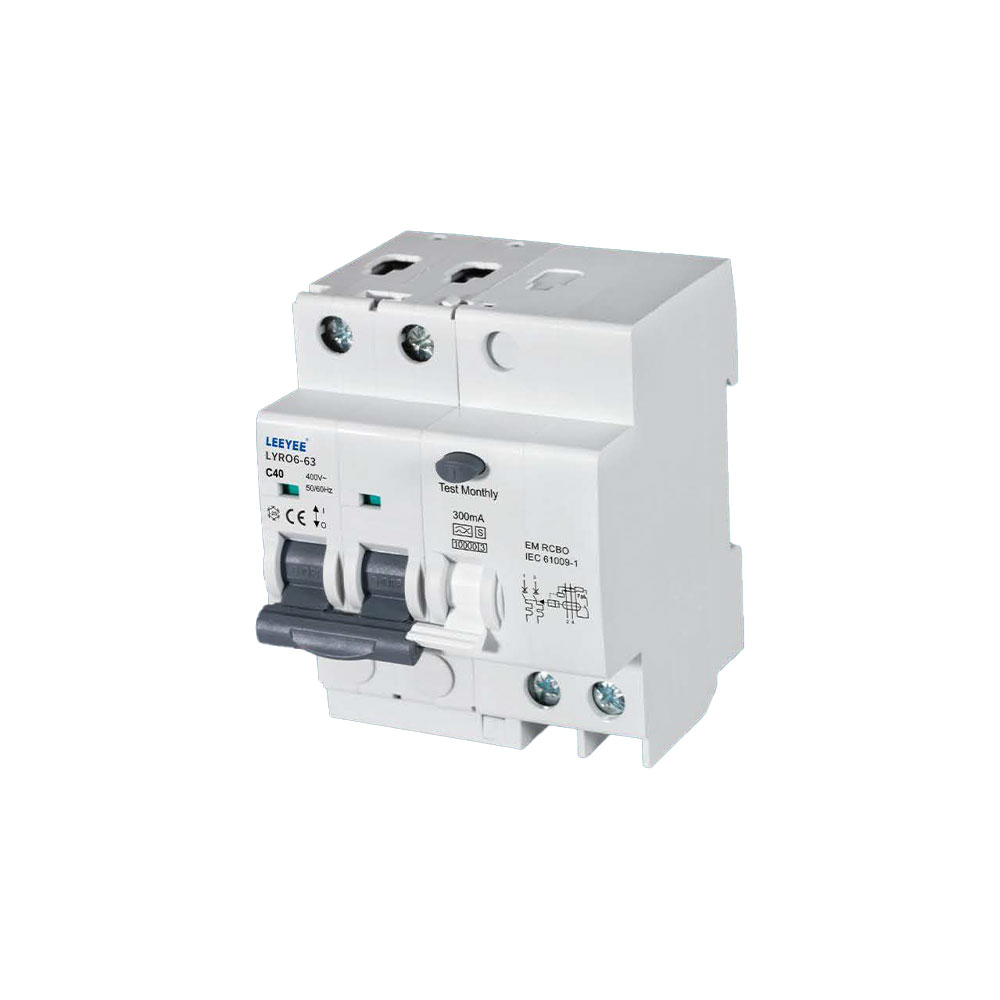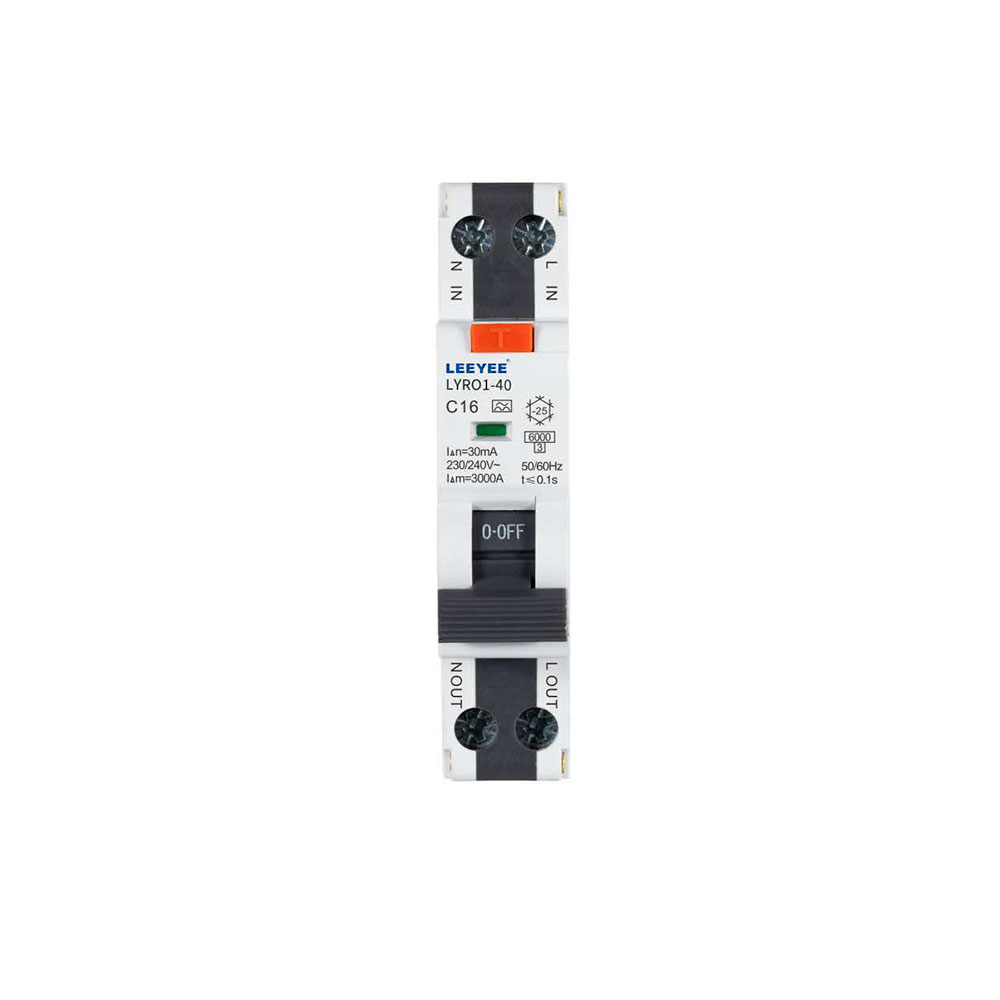Table of Contents
1. Introduction to RCBO
Residual Current Circuit Breakers with Overcurrent Protection (RCBOs) are crucial devices in modern electrical installations. They combine the functionalities of Residual Current Devices (RCDs) and Miniature Circuit Breakers (MCBs) to provide comprehensive protection against both electrical leakage and overcurrent situations. RCBOs play a vital role in ensuring the safety of electrical systems, preventing electric shocks, and protecting electrical equipment from damage.
As electrical installations become more complex, the demand for robust protective devices has grown. RCBOs significantly enhance safety measures in residential, commercial, and industrial environments. This article will delve into the workings, classification, advantages, applications, and considerations surrounding the use of RCBOs.
2. Basic Working Principle
Working Mechanism
RCBOs operate based on two fundamental principles: residual current detection and overcurrent protection.
- Residual Current Detection: This function monitors the current flowing through the live and neutral wires. Under normal conditions, the currents should be equal. If a fault occurs, such as a person coming into contact with a live wire, the current will leak, creating an imbalance. The RCBO detects this imbalance and disconnects the circuit within milliseconds, preventing electric shock.
- Overcurrent Protection: Similar to an MCB, an RCBO provides protection against overloads and short circuits. If the current exceeds the rated limit, the RCBO automatically trips, disconnecting the power supply to prevent overheating and potential fire hazards.
Internal Structure
An RCBO typically comprises several key components:
- Current Transformers: Used for measuring current and detecting imbalances.
- Trip Mechanism: This component activates the disconnection of the circuit when a fault is detected.
- Overcurrent Protection Device: Similar to an MCB, this mechanism responds to overload conditions.
- Reset Button: Allows users to reset the device after a trip.
3. Types of RCBO
Classification by Leakage Current Characteristics
RCBOs can primarily be classified into two types: Type A and Type AC.
- Type A RCBO: Type A RCBOs can detect residual direct current (DC) leakage currents, making them suitable for applications involving DC devices or systems, such as electric vehicle charging stations and solar power systems. If your electrical system includes DC loads, opting for a Type A RCBO is advisable.
- Type AC RCBO: Type AC RCBOs are designed to detect alternating current (AC) leakage currents. They are suitable for most residential and commercial electrical systems. Type AC RCBOs are not suitable for detecting DC leakage currents, so if your application only involves AC circuits, a Type AC RCBO will suffice.
Classification by Phases
RCBOs can also be classified based on the number of phases:
- Single-Phase RCBO: Typically used in residential and small commercial applications.
- Three-Phase RCBO: Commonly used in industrial and larger commercial applications, where three-phase power is standard.
Rated Current and Residual Current Ratings
RCBOs come in various rated currents (e.g., 6A, 10A, 16A, 32A) and residual current ratings (e.g., 30mA, 100mA). The rated current should match the load requirements, while the residual current rating is crucial for determining the level of protection against electric shock. For instance, a 30mA RCBO is typically used for personal protection, while a 100mA RCBO may be used for equipment protection.
4. Advantages of RCBO
Comprehensive Protection
One of the primary advantages of RCBOs is their ability to provide dual protection against leakage currents and overcurrents. This integrated functionality simplifies electrical installations and enhances safety.
Space-Saving Design
RCBOs take up less space compared to installing separate RCDs and MCBs. This compact design is particularly beneficial in environments where panel space is limited.
Simplified Wiring
Using an RCBO minimizes the complexity of wiring in an electrical installation. Instead of separate circuits for overload and leakage protection, a single device can manage both functions, streamlining the installation process.
5. Applications of RCBO
Residential Use
RCBOs are widely used in residential settings, particularly in kitchens, bathrooms, and outdoor areas where the risk of electric shock is higher. They ensure that any leakage currents are quickly detected, providing peace of mind for homeowners.
Commercial and Industrial Use
In commercial buildings and industrial facilities, RCBOs protect critical equipment and personnel. They are often installed in distribution boards to safeguard machinery, lighting, and other electrical systems from overloads and electrical faults.
Special Applications
RCBOs are also employed in specialized environments, such as medical facilities, laboratories, and data centers, where electrical safety is paramount. They help prevent costly downtime and ensure that sensitive equipment operates reliably.
6. Choosing and Installing RCBO
Selection Criteria
When selecting an RCBO, consider the following factors:
- Rated Current: Choose an RCBO with a rated current that matches the load requirements of the circuit.
- Residual Current Rating: Select the appropriate residual current rating based on the application (e.g., 30mA for personal protection).
- Type of RCBO: Determine whether you need a single-phase or three-phase RCBO, as well as whether to choose Type A or Type AC based on the electrical system.
Installation Considerations
Proper installation is critical for the effective operation of RCBOs:
- Follow Manufacturer Guidelines: Always adhere to the manufacturer’s instructions during installation.
- Location: Install RCBOs in easily accessible locations for maintenance and testing.
- Test Regularly: Regular testing of the RCBO’s functionality is essential to ensure it operates correctly when needed.
7. Maintenance and Troubleshooting
Regular Testing
Regularly test the RCBO using the test button provided on the device. This ensures that the residual current detection feature is functioning correctly. It is recommended to perform this test monthly.
Common Issues
Common problems with RCBOs include:
- Frequent Tripping: This may indicate an underlying electrical fault or an overloaded circuit. Investigate the load and check for damaged wiring.
- Failure to Reset: If the RCBO does not reset after tripping, it may be indicative of a persistent fault. Consult a qualified electrician to diagnose the issue.
8. Conclusion
RCBOs are vital components in enhancing electrical safety, offering combined protection against electrical leakage and overcurrent. Their compact design and simplified installation make them a preferred choice in various applications, from residential to industrial settings. By ensuring proper selection, installation, and maintenance, RCBOs can significantly reduce the risk of electrical hazards and protect both people and equipment.
Incorporating RCBOs into electrical systems not only improves safety but also provides peace of mind for users, knowing that they are protected against potential electrical faults. For any further information or assistance regarding RCBOs, please feel free to contact us!


